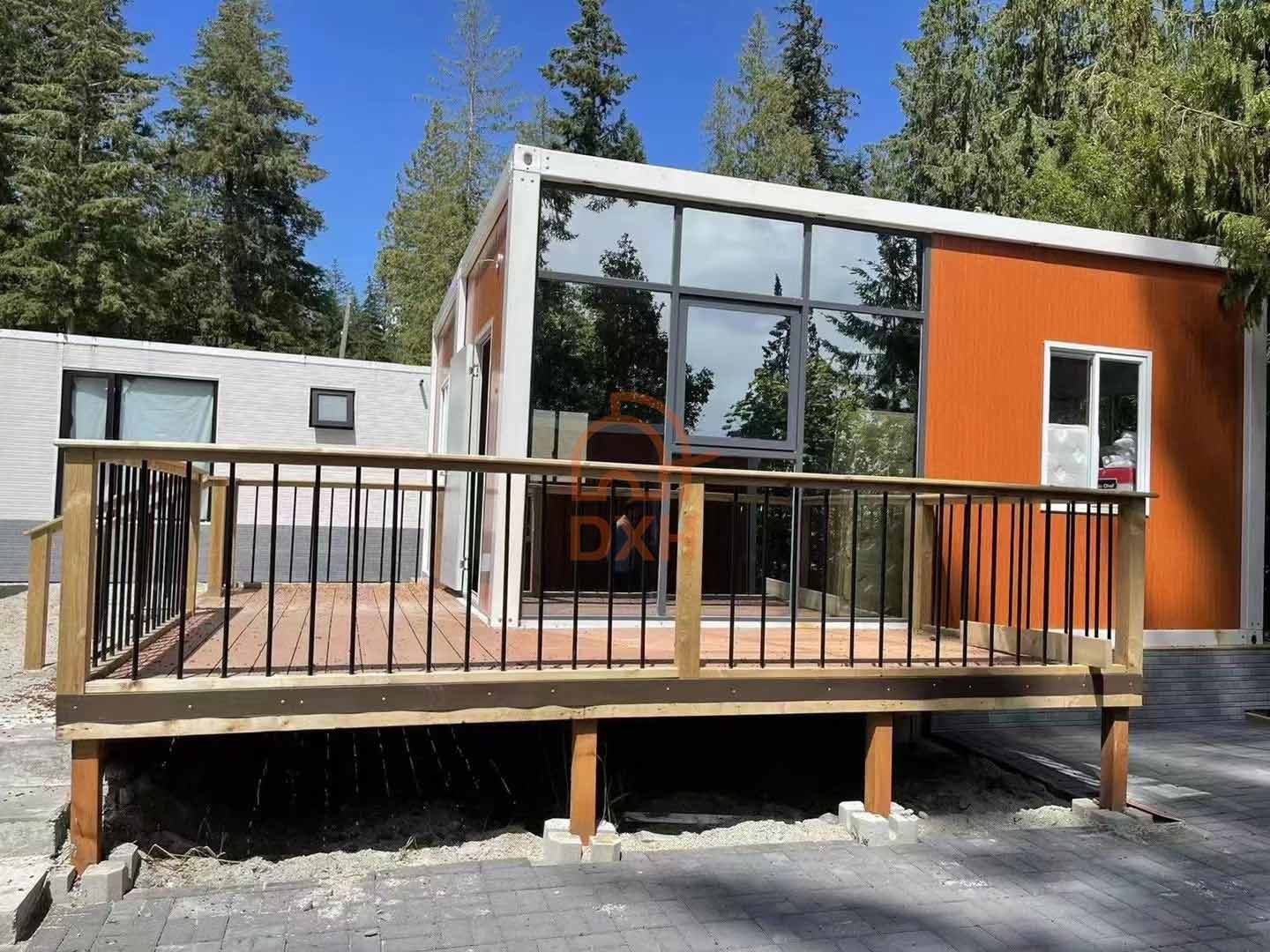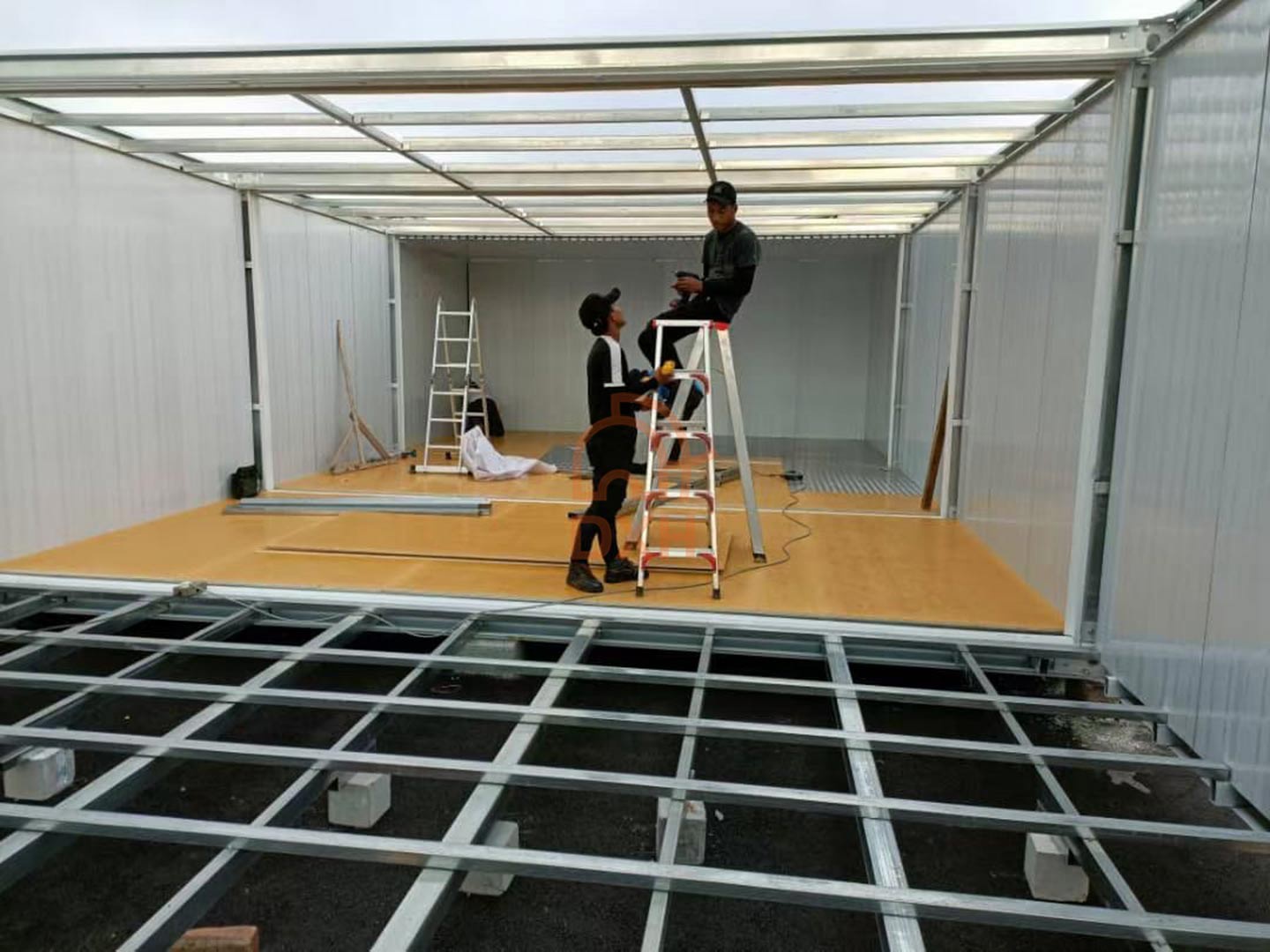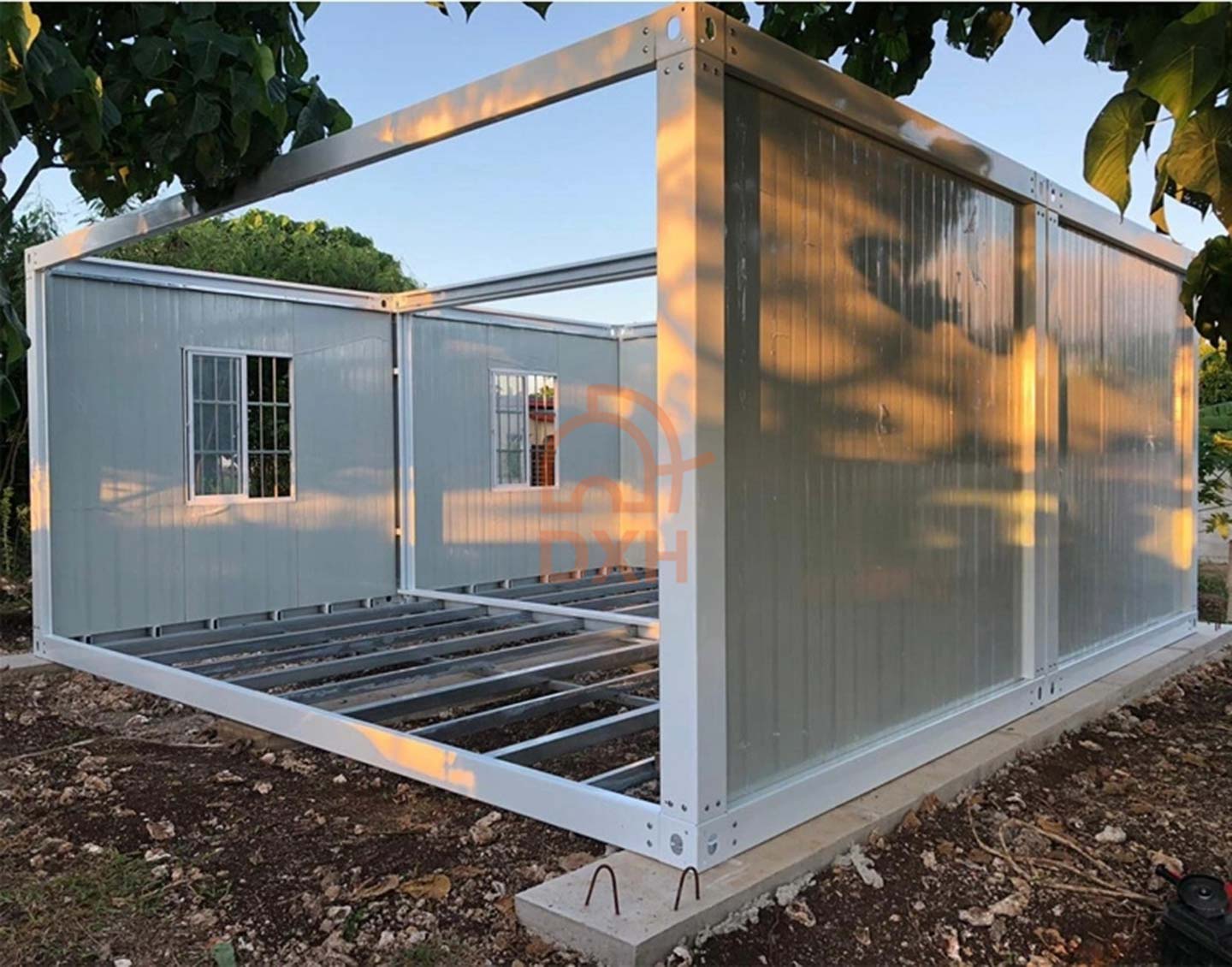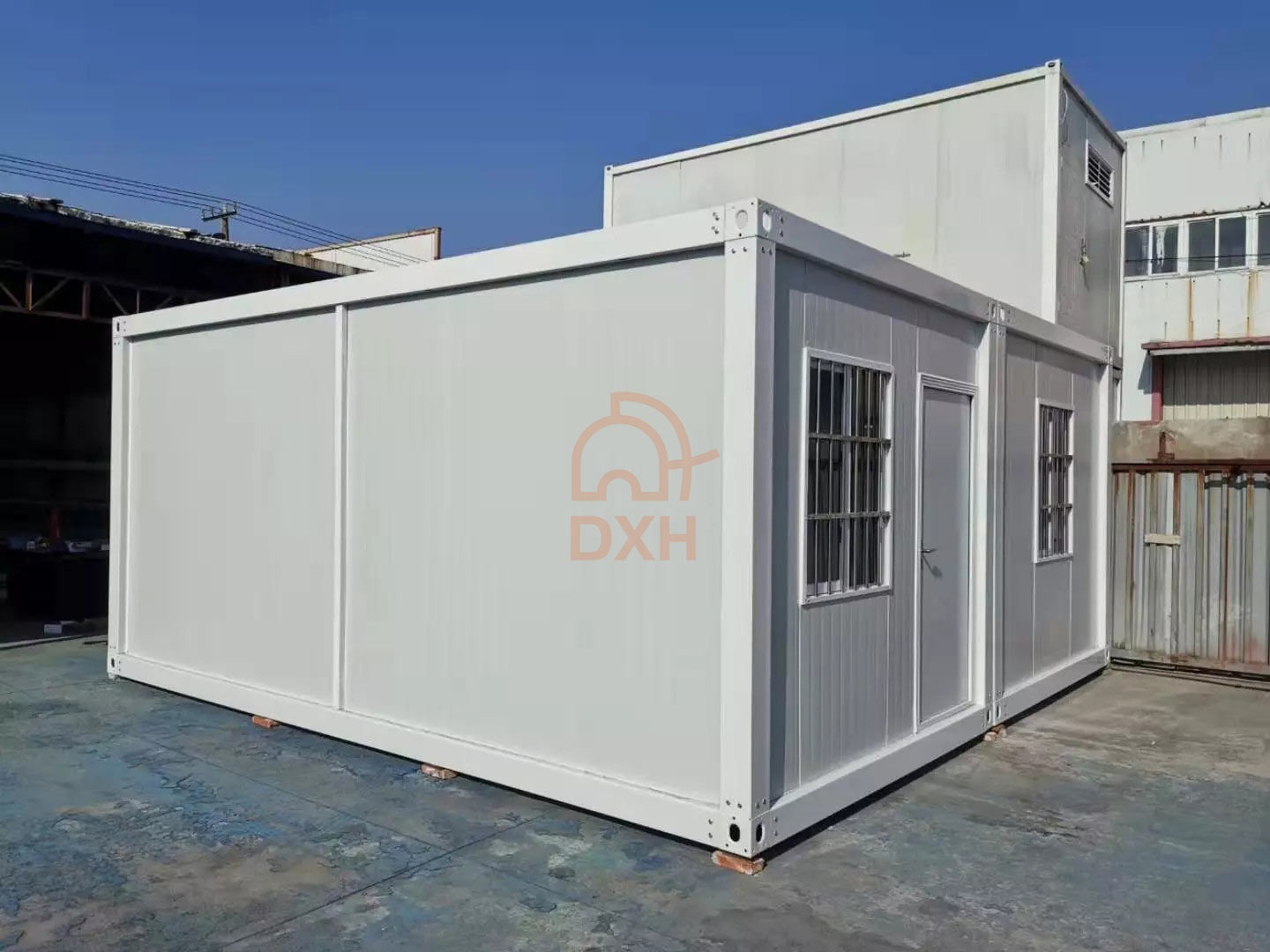1. Construction stage: energy saving, emission reduction, and pollution reduction
In traditional building construction, the site is often dusty, noisy, and piled up with construction waste. The container house is very different, its main components are prefabricated in the factory, and the industrial production process is precise and efficient. In the factory, raw material cutting and assembly are strictly controlled by dimensions, and the scrap is greatly reduced, and the raw material waste rate can be reduced by more than 30% compared with traditional on-site construction. Moreover, there is no need for large-scale earthwork excavation and concrete mixing at the construction site, dust pollution is almost non-existent, and the noise decibel is also controlled in a very low range, which greatly alleviates the troubles of surrounding residents and makes the city quiet and clean.
In traditional building construction, cement production is an important source of carbon dioxide emissions, and container houses reduce dependence on cement and switch to low-carbon materials such as light steel and wood, significantly reducing greenhouse gas emissions. It is estimated that the carbon dioxide emissions of container houses in the construction process of the same scale are only about half of those of traditional buildings, contributing to the reduction of global warming.

2. Transportation and installation: lower energy consumption, flexible and efficient
The affordable modular prefab house elements are lightweight and require significantly less energy to transport than bulky conventional building materials. The transportation of large steel beams and concrete blocks requires heavy trucks to make multiple round-trips, which consumes huge energy; The light steel skeleton and composite wall panels of the affordable modular prefab house have a large loading capacity at one time, and the transportation cost and energy consumption are reduced. After arriving at the site, the modular installation is as fast as building blocks, eliminating the need for a long time to use large lifting machinery, further reducing energy consumption and minimizing the interference of construction to the surrounding environment.
Due to its rapid installation, the project period is greatly shortened, and the time the site is exposed to the natural environment is also correspondingly reduced, which can effectively avoid problems such as soil erosion and vegetation damage caused by long-term construction, and allow the land to recover its original ecology faster, especially in ecologically fragile areas, which is more prominent.

3. the use stage: energy saving, consumption reduction, green and sustainable
The walls and roofs of portable container houses generally use high-quality thermal insulation materials, such as rock wool, polystyrene foam board, etc., to form a tight thermal insulation "shield". In the cold winter, it can reduce indoor heat loss and reduce heating energy consumption; In the hot summer, it can block the high temperature outside and reduce the power consumption of air conditioning and refrigeration. Compared with traditional houses, it can save 30% to 50% of energy bills every year, which is equivalent to saving a considerable amount of coal, electricity and other energy resources for the society over the years.
Some of the portable container houses use green technologies such as solar panels and rainwater harvesting systems. Solar panels convert sunlight into electricity to meet the needs of daily lighting and electrical appliances; The rainwater collected by the rainwater collection device can be used to water green plants, flush toilets, recycle water resources, relieve the pressure of urban water supply, reduce dependence on municipal pipe networks, and practice the concept of environmental protection in daily life.

4. End of life: recycling, reducing garbage
When the prefabricated tiny homes reaches the end of its service life, its light steel, wood and other materials are easy to recycle and dismantle. The light steel skeleton has been professionally treated and can be recast to make new building components; Wooden materials can also be reprocessed into furniture and crafts. Unlike traditional concrete buildings, which become difficult to dispose of after demolition, landfills take up a lot of land and may contaminate soil and groundwater. prefabricated tiny homes continues to write a chapter of environmental protection with recycling, so that the life cycle of building materials forms a closed loop, reducing the demand for natural resources.
From birth to completion, the prefabricated tiny homes implements the concept of environmental protection throughout the whole process, like a mobile green fortress, guarding our ecological environment and leading the construction industry to a new journey of sustainable development.

Our hours
Monday to Sunday: 9 AM - 6 PM
(all hours are Eastern Time)